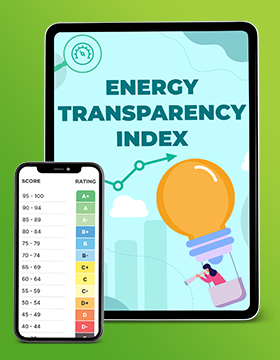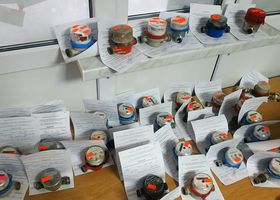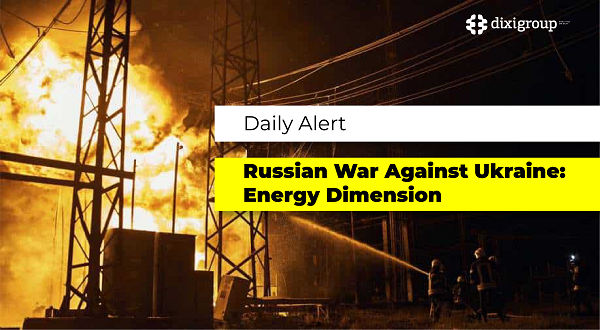Summer without outages: DiXi Group predicts the energy situation in Ukraine
In the absence of attacks on energy facilities and stable operation of the infrastructure, the deficit in the power system will not exceed 5%, which will avoid mass outages.

On May 28, the DiXi Group analytical center held the fourth online event in the Energy Security Talks series, dedicated to the topic: "What will the situation be in the Ukrainian energy system in the summer?". During the event, updated analytical reviews "Summer Outlooks: Assessment of the Situation in the Gas and Electricity Market" were presented, which allow assessing the readiness of the Ukrainian energy system for the peak demand season.
The documents were prepared taking into account the European methodologies of ENTSO-E and ENTSO-G and adapted to the conditions of martial law, which gives them practical significance in the face of the constant threat of Russian shelling.
"Assessing the adequacy of energy resources is not only a technical task, but a socially important tool that helps the country better prepare for potential crises and maintain stability in conditions of uncertainty," emphasized Roman Nitsovych, Research Director of DiXi Group.
Electric power industry: three scenarios for development of events
A key part of the event was devoted to assessing the state of the electricity sector. DiXi Group General Manager for Security and Resilience Olena Lapenko presented updated calculations on the ability of the Ukrainian power system to meet demand in the summer of 2025. She emphasized that all forecasts are indicative and are based on an analysis of consumption dynamics, generation levels, and external factors, including attacks on energy facilities.
"Currently, the basis of the Ukrainian energy system is nuclear generation. The overall generation structure has been preserved, but the available capacity has decreased due to damage to the infrastructure," Lapenko noted.
According to her, about 4–5 GW of capacity has already been returned to the system. The capacity of thermal generation is currently about 4.5 GW, and hydroelectric power plants - almost 4 GW. However, due to the absence of a spring flood, hydro resources are used in a limited mode. In addition, repairs are actively carried out at thermal power plants in the summer, and 2–3 power units of the nuclear power plant will be under repair, which will reduce the available capacity by 1.3–1.4 GW.
Electricity imports remain an important stabilization tool. In April 2025, their volume reached 325 thousand MWh. In June, volumes are expected to increase to 800 thousand MWh per month. This meets the needs, but depends on the availability of technical import capabilities, the price situation on European markets and the security of networks.
"Imports have already become a critical element of energy stability. But it is also a signal of our integration into the European market," Lapenko emphasized.
Scenarios:
● optimistic: mild weather, no attacks, stable infrastructure. Deficit <5%, which will avoid mass outages;
● average: hot summer without massive attacks — peak load up to 18.5 GW. Deficit of 10–15% is possible with reduced imports and repairs;
● pessimistic: new attacks on thermal power plants, hydroelectric power plants or networks. Deficit up to 20%, threat of long-term local outages.
"We must be ready for any scenario. The main thing is to prepare for a deficit, protect infrastructure, and integrate with the European market," Lapenko emphasized.
Roman Bekuzarov, Deputy Commercial Director of D.TRADING, drew attention to the market problems:
"The biggest challenge is the increasing profile of the energy balance through distributed generation and limited imports during peak load hours. This increases volatility in the day-ahead (DA) and intraday (ID) markets."
Gas segment: challenges of accumulation
In the gas segment, the key issue remains the accumulation of resources by the autumn-winter period 2025/2026. As of May, 6.14 billion cubic meters have been accumulated in storage facilities. The goal is at least 14–15 billion cubic meters.
"The record-breaking start to the season requires urgent decisions. We need to accelerate the pace of pumping and ensure stable financing of imports," Lapenko noted.
Accumulation scenarios:
● optimistic: accumulation of 15 billion cubic meters (injection of 32 million/day, imports up to 5 billion). Will ensure stability in case of crises;
● average: 13 billion cubic meters (24 million/day, imports 3.7 billion). Enough for basic needs, but limited reserve in case of complications;
● pessimistic: 11–12 billion cubic meters. Likely need for additional purchases at higher prices in winter.
"This creates a high risk of gas shortages in winter. The key threats are continued attacks, financing problems, and increased demand through generation," Lapenko emphasized.
Domestic mining: impacts, progress and prospects
Artem Petrenko, executive director of the Association of Gas Extracting Companies of Ukraine, spoke about the state of the industry:
"Despite systematic shelling, enterprises are setting records. 'Ukrgazvydobuvannya' drilled over 107 thousand m in the first quarter - twice as much as last year."
"Stable regulations, predictable demand, and investment are the keys to the development of the industry," he noted.
Petrenko noted that 1.5 billion cubic meters of gas have already been contracted, and Naftogaz has attracted 410 million euros for the purchase of another 1 billion cubic meters. The contract with the Polish Orlen is for another 300 million cubic meters of liquefied gas.
Preparations are also underway for new PSA tenders on the Mezhyhirska and Svichanska fields, and Ukrnafta has begun exploration on the Oleska field.
Despite all the challenges facing the Ukrainian power system — from targeted attacks to resource shortages — the results of the DiXi Group analytical review give a cautiously optimistic assessment. The summer of 2025 may well pass without mass power outages if preventive measures are taken in a timely manner, including strengthening the protection of critical infrastructure, operational modernization, and coordinated coordination at the state, market, and international partner levels.
However, the real challenge will be preparing for the heating season. The issue of gas storage requires not only clear logistics and technical implementation, but also financial support and political will. In a war situation, energy security is not just an economic issue, but a fundamental component of national security. That is why the scenarios and recommendations proposed by DiXi Group should become the basis for decisions that will determine how confidently Ukraine will be able to get through the winter of 2025/26.








